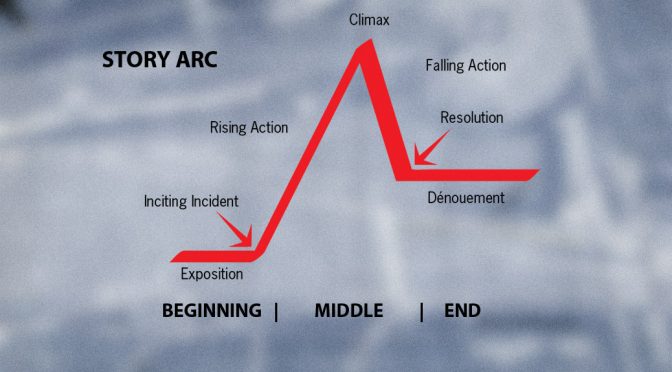Each story is unique, yet all stories can be boiled down into three distinct “acts”: beginning, middle, and end.
A story arc is a tool to help storytellers outline a good story into five key components:
- Exposition
- Rising action
- Climax
- Falling action
- Resolution
Exposition
The exposition is where the story begins and sets the stage for the audience. The introduction should include a SETTING, both physical and emotional; it might also include a BACKSTORY.
Rising Action
The rising action is what begins to move the story in a forward direction. The inciting incident is the initial action that sets the story in motion. The rising action is generally characterized by conflicts and complications to drive the plot.
This rising action component may contain four separate elements:
- the trigger – the event that sets the plot into motion
- the quest – how the storyteller responds to the trigger
- the surprise – any twist, turn, or unexpected event that arises
- the critical choice – decisions made that lead to the climax of the story
Climax
The climax of the story is where the plot reaches its critical mass; it’s the tipping point where tensions or excitement are at their highest and the audience is most engaged by what’s happening.
The climax is the turning point of the story and provides a sense of change.
Falling Action
The falling action occurs on the other side of the climax. While the rising action helps build towards the climax, the falling action helps deescalate and ease readers into the conclusion of the story cymbalta cost.
Resolution
Last but not least, the resolution of the story is where the plot comes to an end.
The resolution is the final curtain call of the story and strives to leave a lasting impression.

